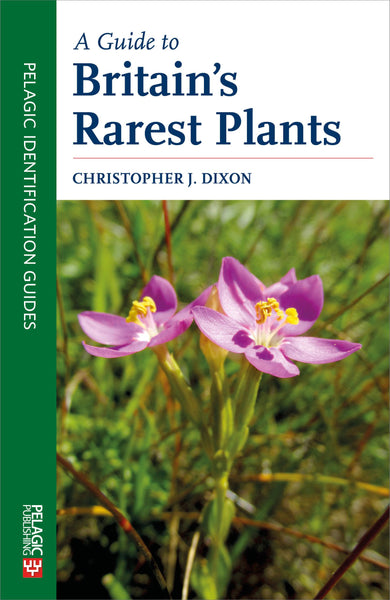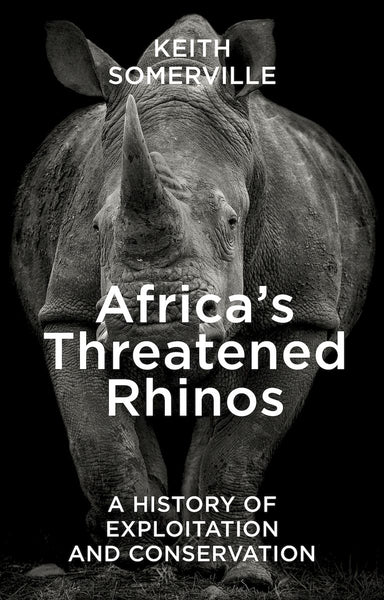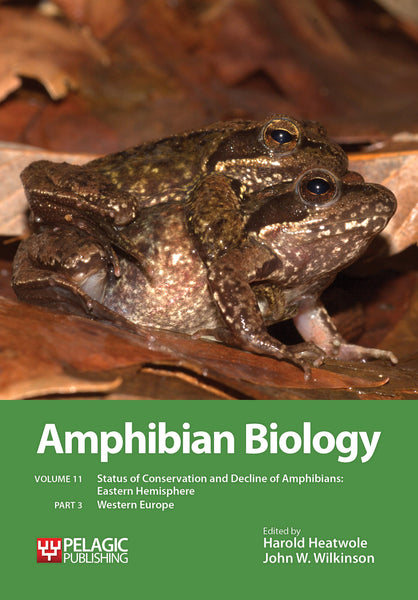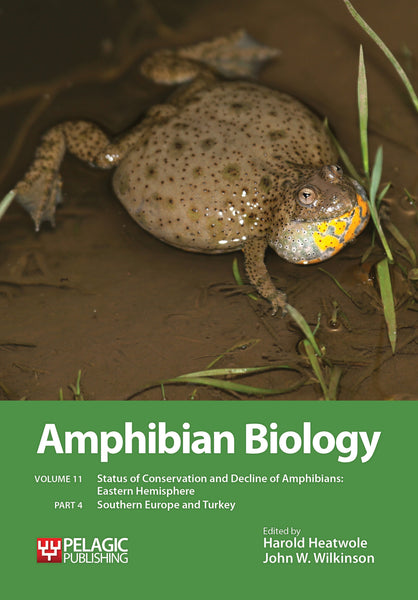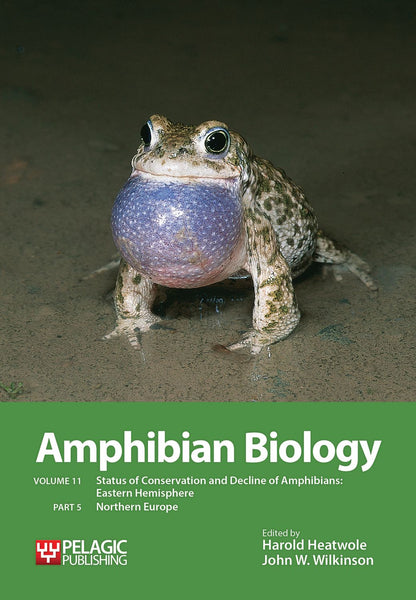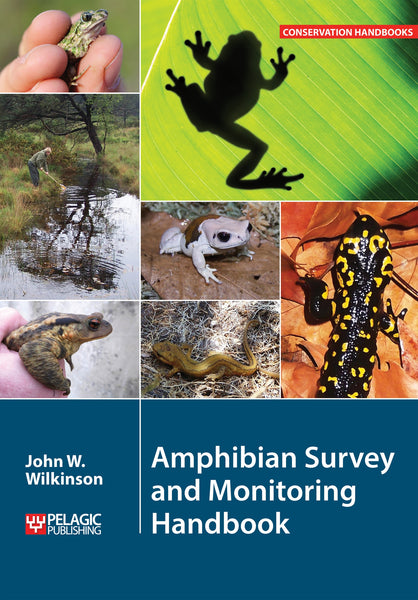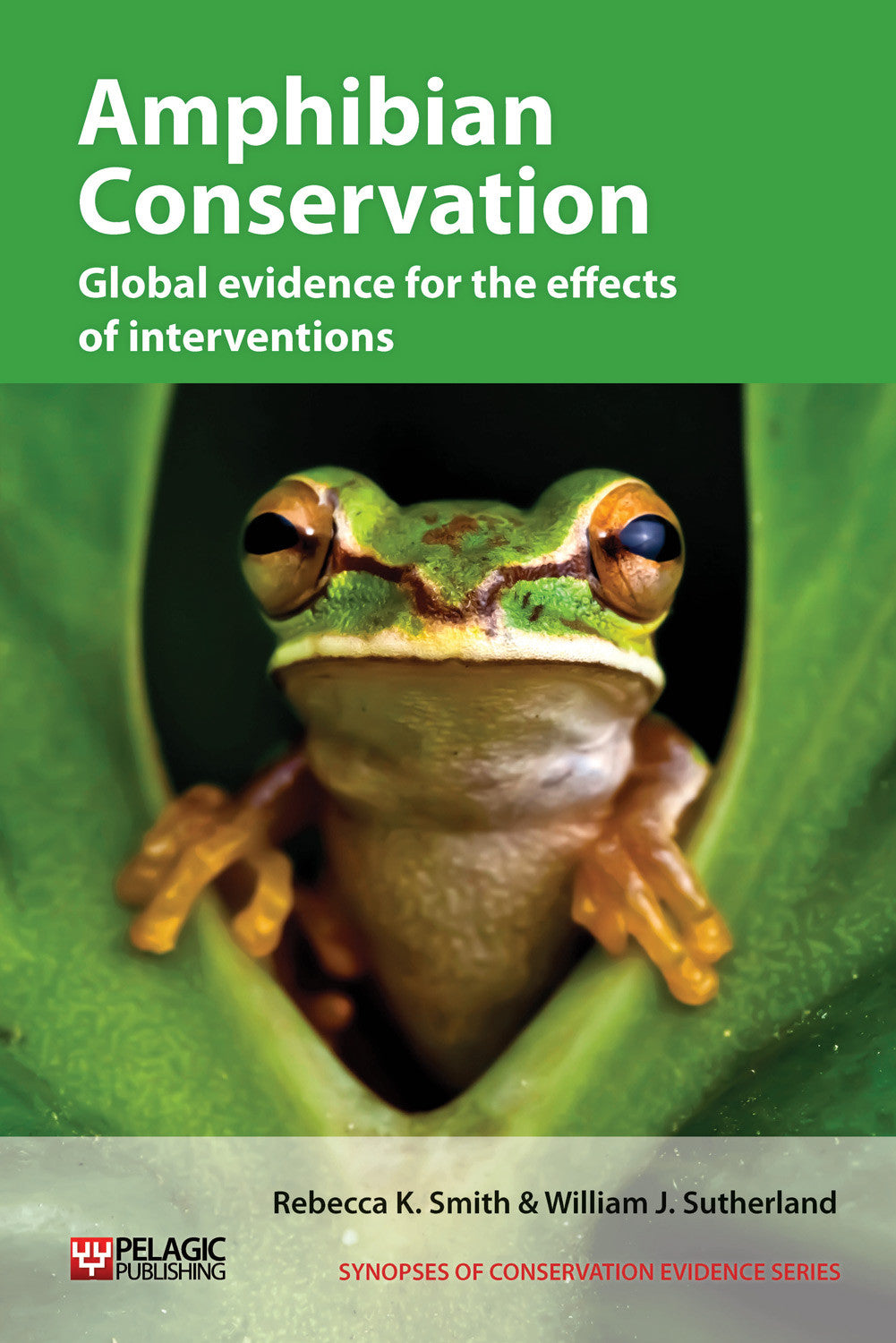
Amphibian Conservation
Global evidence for the effects of interventions
- An evidence-based approach to biodiversity conservation
- Summarises the available scientific evidence
- International scope
- This book clearly brings us a large step closer to making the right choices in practical nature management, and is indispensable for those involved in doing so.
—Tom Stumpel, RAVON
- amphibian
- amphibians
- conservation
- ecology
- evidence-based
- habitat loss
Description
Amphibian Conservation is the fourth in the series of Synopses of Conservation Evidence, linked to the online resource www.ConservationEvidence.com.
This synopsis is part of the Conservation Evidence project and provides a useful resource for conservationists. It forms part of a series designed to promote a more evidence-based approach to biodiversity conservation. Others in the series include bee, bird, farmland and bat conservation and many others are in preparation.
Approximately 32% of the 7,164+ amphibian species are currently threatened with extinction and at least 43% of species are declining. Despite this, until recently amphibians and their conservation had received little attention. Although work is now being carried out to conserve many species, often it is not adequately documented.
This book brings together and summarises the available scientific evidence and experience relevant to the practical conservation of amphibians.
The authors consulted an international group of amphibian experts and conservationists to produce a thorough summary of what is known, or not known, about the effectiveness of amphibian conservation actions across the world.
Readership
Land manager, conservationist, farmer, campaigner, advisor or consultant, policymaker, researcherTable of Contents
1 Threat: Residential and commercial development
2 Threat: Agriculture
3 Threat: Energy production and mining
4 Threat: Transportation and service corridors
5 Threat: Biological resource use
6 Threat: Human intrusions and disturbance
7 Threat: Natural system modifications
8 Threat: Invasive alien and other problematic species
9 Threat: Pollution
10 Threat: Climate change and severe weather
11 Habitat protection
12 Habitat restoration and creation
13 Species management
14 Education and awareness raising
Index
Reviews
- This is part of an ambitious series that aims toward accumulating a comprehensive summary of evidence on the effects of conservation interventions on saving the diversity of life over the entire planet. —Francis R. Cook, The Canadian Field Naturalist
- This book clearly brings us a large step closer to making the right choices in practical nature management, and is indispensable for those involved in doing so. —Tom Stumpel, RAVON
- It will be a valuable guide for graduate students interested in evaluating evidence for effective amphibian conservation, and is sure to generate new approaches, critical analyses, and discussions. —Karen R. Lips, Copeia
- This book is a useful tool and perhaps an ideal first step for identifying or rejecting potential interventions for amphibian conservation ... —Mike Phillips, Herpetological Bulletin
- This excellent book reports many successful attempts to conserve amphibians at a local scale but, globally, the sixth mass extinction continues to gather pace. —Tim Halliday, Phyllomedusa
- Amphibian Conservation is a welcome antidote to the proliferation of depressing reports of amphibian declines. The book is packed with literature summaries and citations; a veritable information goldmine for graduate students and researchers. It also admirably provides decision makers with a well-researched resource of proven interventions that can be employed to stem/reverse the decline of amphibian populations. — John G. Palis, Bulletin of the Chicago Herpetological Society
About the Author
Dr Rebecca K. Smith is a Research Associate at the University of Cambridge. She holds degrees in the ecology & conservation of European hares (PhD, University of Bristol), Applied Ecology & Conservation (MSc, University of East Anglia) and Biology (BSc with Honours, University of Bristol). Dr Smith is part of the Conservation Evidence group at the University of Cambridge, which focuses on summarising and disseminating scientific evidence about the effects of conservation interventions for habitats and species. She is an author of the Farmland Conservation synopsis and has undertaken systematic reviews on the effectiveness of conservation management for birds. Prior to this work Dr Smith undertook projects developing monitoring and management strategies for high conservation priority mammal species. Her current scientific duties include facilitating the development of further synopses including bat, reptile and forest conservation and invasive species management. She is also the Editorial Administrator of the Conservation Evidence Journal.
Bill Sutherland is Miriam Rothschild Professor of Conservation Biology at the University of Cambridge and President of the British Ecological Society. He is known for his research on integrating science and policy particularly in the field of evidence-based conservation. Two of his key contributions have been the horizon-scanning exercises to identify future priority issues and the 100 important questions in various disciplines (ecology, poverty prevention, global agriculture and food amongst others). He has also worked extensively on bird population ecology and the biodiversity impacts of agriculture.
Bibliographic Information
 279 pages
279 pages - BISAC NAT028000, SCI088000, SCI070000, SCI020000, NAT011000, NAT045000
- BIC PSVW3, WNCK, PSVS, RNKH, PSV






